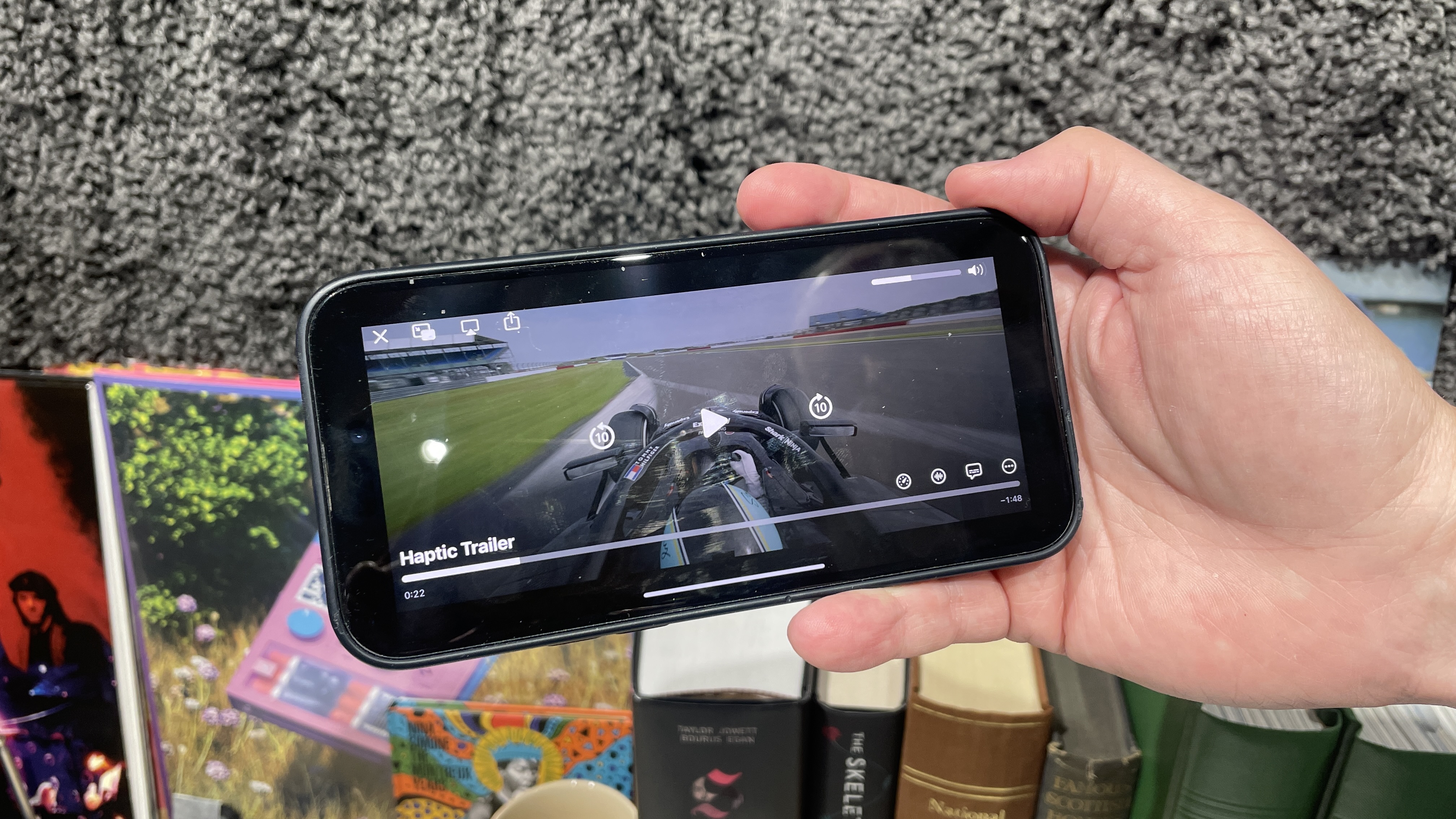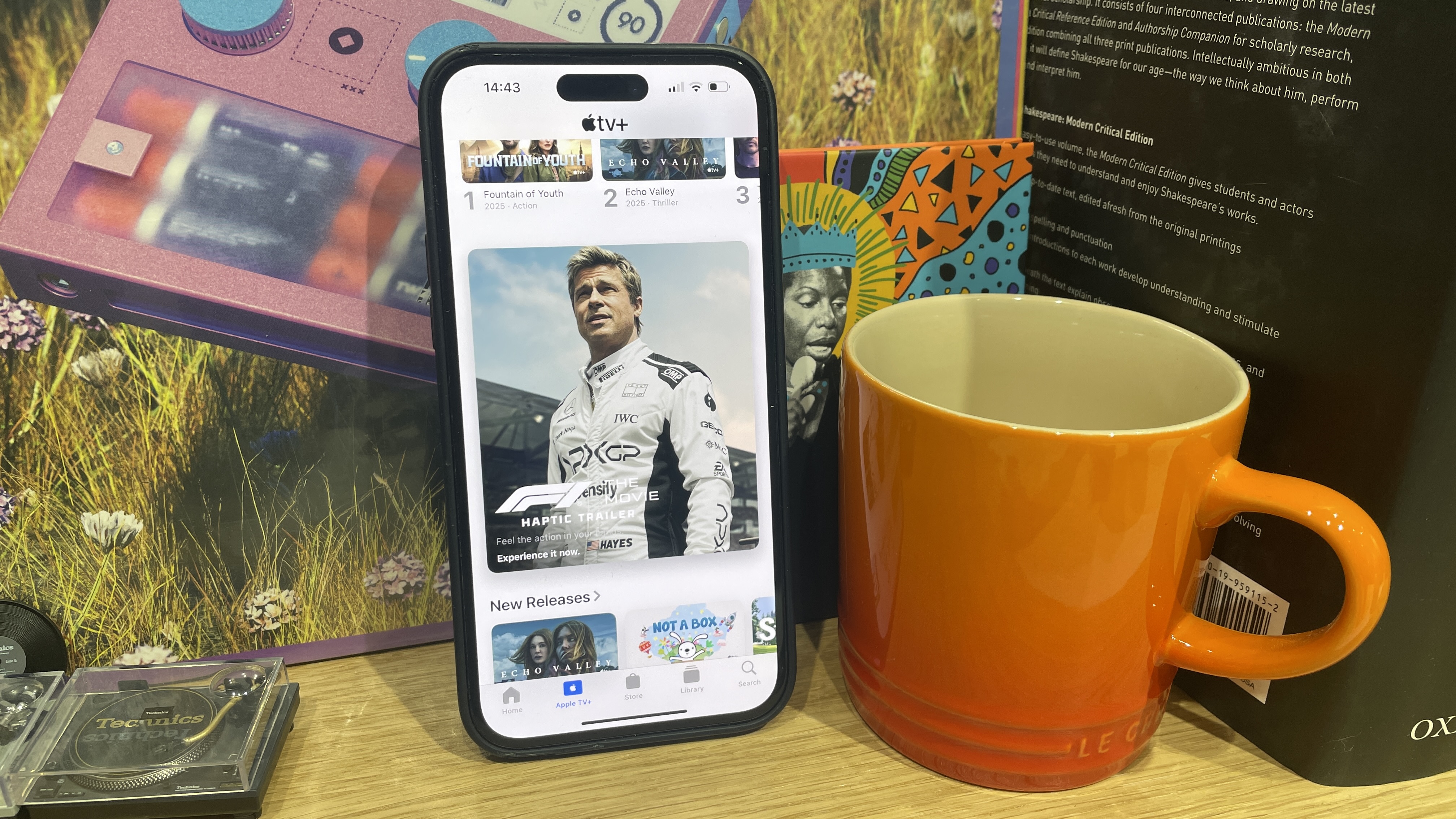Apple’s trailer for F1 The Movie has an innovative feature – and I was shocked how good it is
Apple’s clever marketing ploy has revved my engine

A couple of days ago, I was doing some housekeeping on my iPhone 15 Plus, namely catching up on the 120 app updates I’d been putting off for the past week (does anyone else do this?) when something on the Apple App Store caught my eye.
It was an advert to watch the trailer for F1 The Movie on the Apple TV app. Now, normally, I tend to stay away from trailers – especially anything longer than around a minute. The modern trailer gives away so much of the plot, there’s hardly any point going to the cinema. But that’s a rant for another day.
The interesting thing about the F1 film trailer was that it was being advertised as a ‘haptic trailer’. That’s right, Apple has used the Taptic Engine within its iPhones (the components that create haptic feedback) to showcase the movie by adding vibrations to run in time with the on-screen action, and add an extra dimension to your viewing experience.
So, I decided to take it for a spin. Did it rev my engine enough to venture out to the local multiplex, or did it leave me feeling as deflated as a punctured Pirelli?
Start your (Taptic) Engines

To watch the F1 The Movie haptic trailer, all you need is an iPhone running iOS 18.4 or later and, of course, the Apple TV app installed too.
Before I pressed play, I was slightly concerned it was going to feel like a gimmick, but to be honest, I was really impressed.
After all, as my colleague and Senior Staff Writer Lewis Empson pointed out to me, Sony has offered a similar kind of feature on some of its older Xperia smartphones called Dynamic Vibration, which, according to Sony, adds “synchronized vibration when you watch videos or listen to music on your device”.
The latest hi-fi, home cinema and tech news, reviews, buying advice and deals, direct to your inbox.
Whether it could handle this trailer in the same manner, I’m not sure, as it feels as though Apple has mapped the action to the taptic engine with superb precision.
As Brad Pitt’s car engine is fired up in the pit lane, there’s the initial high rev, and the Taptic Engine jumps into action as the car’s engine barks into life. There’s a nice dynamic contrast between the short, sharp vibration as Pitt’s character selects a gear and the prolonged vibration from the tyres as his car screeches out of the pit garage onto the pit lane.
And it’s when the action moves out onto the track that I think this brings the experience into its own. The speed of the haptics, the speed of the car and the driver’s eye view, combined with the fact you’re watching and holding the phone in landscape, like a steering wheel, in my opinion at least, make it feel really engaging.
The iPhone and the way you hold it in landscape is the perfect way to showcase a feature designed to work with a movie where there’s a lot of driving action. Some elements leave you feeling as if you’re about to play an F1 racing game on a PS5 or Xbox.
The speed of the Taptic Engine's response, the variations in intensity and its ability to match up with the action perfectly kept me glued to my screen.

A good example of this is the brief clip where Brad Pitt is weaving his way through traffic. You get a fantastic sense of speed from the power of the vibrations, while the slight feeling of judder under braking adds a different but believable sensation.
What really impressed me was the speed and precision of the haptic effects. Any delay and it would feel like the physical version of lip-sync errors when you’re watching TV, when the sound doesn’t match up to actors’ voices.
In this case, it would be a delay between the vibrations and the on-screen action, but the vibrations always seem to hit their mark here. They seem to start and stop with impressive precision – I’d be interested to know exactly how Apple went about implementing the tech to work in such a slick way.
One small observation is that I’m sure that wearing headphones (in this case a pair of Sony WH-1000XM6) helps lock you in even more. Using just the iPhone’s speakers, I don’t think you’re drawn in quite as much.
So, did it make me want to rush out and see the film? It certainly made me feel excited about it, so in that respect, I suppose it’s job done. The big question is, would I want to watch the whole two hours and thirty-six minutes with my iPhone and fingers vibrating? Probably not.
I don’t think consuming content and getting haptic feedback from a smartphone is going to be the next big thing or change how we consume movies, but as a marketing exercise, it fits the brief pretty perfectly from where I’m standing.
MORE:
I've been reviewing TVs for 18 years, and there's one model I recommend over and over again
Andy is Deputy Editor of What Hi-Fi? and a consumer electronics journalist with nearly 20 years of experience writing news, reviews and features. Over the years he's also contributed to a number of other outlets, including The Sunday Times, the BBC, Stuff, and BA High Life Magazine. Premium wireless earbuds are his passion but he's also keen on car tech and in-car audio systems and can often be found cruising the countryside testing the latest set-ups. In his spare time Andy is a keen golfer and gamer.
You must confirm your public display name before commenting
Please logout and then login again, you will then be prompted to enter your display name.

